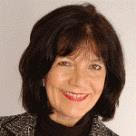And now……Be Creative!

21st November 2025: Please note that our website is now "frozen", preparing for migration in December.
All our content can be read as normal. Events can continue to be booked as usual.
If you have any queries, please email us at
webadmin@wcomc.org. Thank you
One risk too far....?
“I’m pushing my luck,” I thought, as I watched the violins, in their camouflage boxes, being loaded onto the bus. “The project’s gone so well so far, why do I want to risk being thrown out on my ear just to test a hunch? After all, my colleagues manage pretty well without it”. I had just completed the analysis phase of a performance improvement project for a large Italian company and was about to embark on the improvement part when I decided to introduce a new, unproven element. I had been trained in what I considered to be the best performance improvement methodology available, but I soon realised that there was something missing. Something that would help employees re-invent, rather than just improve, the way they work and develop truly creative solutions, of the quantum leap kind.
We all like to think that we can think “out of the box” when we need to, but it really isn’t that easy. By definition, we don’t see our boxes, or we wouldn’t need help to see beyond them. A group of employees who have just been taken through an analysis of the way they work, can’t be expected to suddenly come up with breakthrough solutions, without the help of some pretty robust tools and competent facilitators.
Why do companies still avoid hiring weirdos....?
Despite Tom Peter’s legendary exhortation to companies to “Hire weirdo’s!”, most companies are still depressingly risk averse when it comes to hiring people. They want employees to be predictable - until, of course, they need them to come up with “outside the box” solutions to company problems. If you want people to be creative, you need to wake up their creativity, because that’s not what the school system or the workplace is structured to do. You need to provide tools and give people time.
Getting the thinking from "not possible" to "Maybe.... it just could be possible!"
“….but that was an American company”; “….but that was a different market”; “…but that was a different culture”; “….but that wouldn’t work here”.
Just a few of the usual comments when teams are given examples of how others managed to find a new approach.
I had developed a two-day workshop to fit in between the analysis and redesign phases, and included techniques that would help unleash participants’ creativity, but still felt there was something missing. I needed to find a way to get from “not possible” to “maybe ….it just could be possible”. A firewalk would do it, but that’s something that produces results only if people spontaneously decide to do it and in the right context, not as a party trick. You cannot ask employees to walk on hot coals to change their mindset, as a major bank discovered on waking up to find their name all over the papers when some of their employees got their feet burnt!
Imposing an "Out-of-the-Box" experiment
Then I remembered – Evabritt, of course! I first met Evabritt in Stockholm when she had been invited by a colleague to run a two-hour workshop for one of the teams she was working with. Yes, I had walked on hot coals, but this was something else – possibly an even more powerful way to shift peoples’ perception about their own ability.
For that particular project, Evabritt’s intervention was mainly aimed at team building. The project team and consultants walked into the room to find twenty-five chairs and twenty-five violins in their open cases beside each chair. I thought, “This looks like fun! We’re going to play around with the violins for a while, produce happy endorphins, and be ready for another ‘out of the box’ day’s work”. Of course, I knew that at my age learning the violin was simply out of the question. I had studied the piano as a child and had shown no aptitude, despite my passion for the instrument. That was before the workshop. What happened during the workshop is hard to describe. All I knew at the time, was that when I and twenty-four other people walked out of the room two hours later, I truly believed that if I decided to put some effort into it, I could learn to play the violin. A profound shift from “not possible” to “possible” had taken place, a feeling shared by all participants.
I thought, “This looks like fun! We’re going to play around with the violins for a while, produce happy endorphins, and be ready for another ‘out of the box’ day’s work”. Of course, I knew that at my age learning the violin was simply out of the question. I had studied the piano as a child and had shown no aptitude, despite my passion for the instrument. That was before the workshop. What happened during the workshop is hard to describe. All I knew at the time, was that when I and twenty-four other people walked out of the room two hours later, I truly believed that if I decided to put some effort into it, I could learn to play the violin. A profound shift from “not possible” to “possible” had taken place, a feeling shared by all participants.
The importance of Cloak and Dagger...
I kept turning to that feeling and to that transformation as we drove through the Umbrian countryside to the farmhouse complex where I would be leading the two-day workshop. To further encourage participants to take a different view of their work, I had determined to choose an unusual location, but now we didn’t know whether the bus would be able to get us there. Once off the motorway, the rather large bus had to negotiate about 10 KM of a muddy, narrow, dirt road, in pitch darkness. In retrospect, it got the adrenaline going and was a dramatic lead-up to the events that were to follow, but at the time I thought I had thrown too many unproven elements together.
Evabritt and I had agreed that the surprise element was important, so we had to ensure that neither the bus driver nor any of the staff at the farm house complex would mention the violins. Evabritt tuned them in secret, when everyone had gone to bed.
How to launch an entirely different workshop activity....
I started the workshop with some lateral thinking exercises and a few hours before lunch led the team to the room where Evabritt was ready with the .jpg) violins. Surprised they certainly were, and they, too, thought it would be a bit of fooling around. In fact, as soon as they saw the violins, they picked them up and attempted to play them, much to Evabritt’s dismay. But she got them to put them down and started at the beginning – with some stretching exercises followed by beating time to music. We learned how to hold the violin, what notes the strings corresponded to, and how to pluck the strings before moving on to using the bow.
violins. Surprised they certainly were, and they, too, thought it would be a bit of fooling around. In fact, as soon as they saw the violins, they picked them up and attempted to play them, much to Evabritt’s dismay. But she got them to put them down and started at the beginning – with some stretching exercises followed by beating time to music. We learned how to hold the violin, what notes the strings corresponded to, and how to pluck the strings before moving on to using the bow.
Our violin “lesson” included singing, playing in unison, improvising and “leading”, all of which were accompanied by the piano.
As a consultant, there is nothing more nerve racking than introducing a group activity that is supposed to lead participants to gain an insight. Participants either get it, and the atmosphere is euphoric, or they don’t, and everything falls horribly flat. Fortunately, it didn’t take long to realise that they got it. The expression on their faces said it all.
Was the activity a successful addition to the workshop and did it produce results?
One of the participants said “I felt I had been stretched like the string of a bow and then released like an arrow. We surprised ourselves by what we produced the following day.”
Vindication of the "off-the-Wall..."
I invited Evabritt back twice to the same company: The second time for the same creativity workshop for another performance improvement team and the third time as part of the leadership development programme for senior management. They “got it” every time.
Evabritt Gratte is a violinist and also teaches at the Stockholm Conservatoire. Her violin playing management workshop for team building and breakthrough thinking is much in demand in both Swedish companies and abroad. evabritt@gratte.se

Liveryman Gia Campari founded the London based Signals of Change Consultancy which specialises in leadership development and operational performance breakthroughs. www.signalsofchange.com
